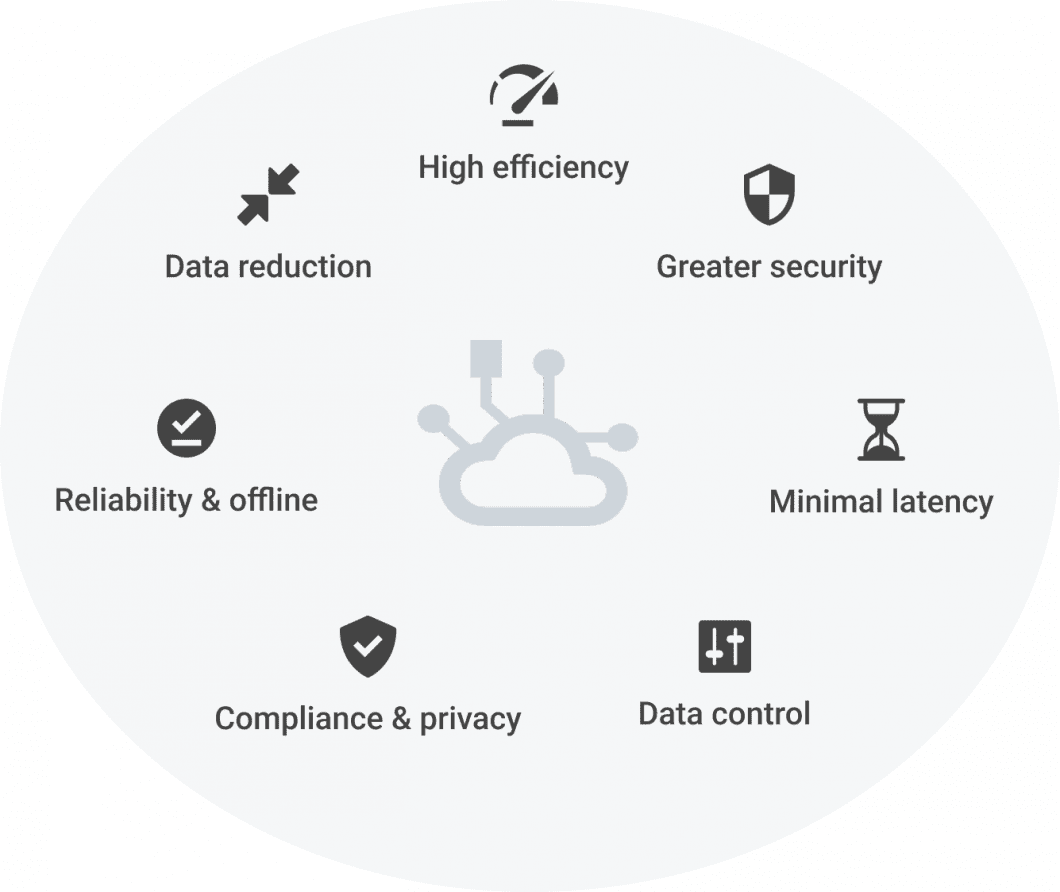The Viso Platform lets you build and operate no-code computer vision with edge computing to run highly efficient and private on-device machine learning (Edge AI). The concept of Edge AI allows processing sensitive data locally, without the need to send all video streams into the Cloud (data-offloading) for processing it there.
What are the advantages of Edge AI for computer vision?
Due to the decentralized data processing near the data source, Edge AI allows overcoming the limitations of data privacy in image processing. Sensitive and confidential visual data of intellectual property (IP), personal identifiers (PID), or personally identifiable information (PII) is analyzed in real-time – without the need to store or transmit data.
The ability to build distributed computer vision systems allows to deliver AI vision anywhere and scale it without the concerns of latency, bottlenecks, robustness, and efficiency. Due to the instant processing, Edge AI-based applications generate significantly fewer data while achieving much higher data quality.
When you deliver computer vision with Viso, you can take advantage of the following benefits for private video analysis:
- Instant real-time video analysis: Privacy through real-time AI processing, significantly less and higher-quality data is generated.
- Autonomous operation: No human operators are required. On-device machine learning applications can run permanently (always-on computer vision).
- Protect sensitive visuals: Avoid sending video streams to the Cloud; operate vision systems without storing or transmitting image or video data.

High-efficient computer vision with edge computing
Computer vision involves enormous amounts of unstructured data, images, and videos. AI is needed to make sense of the large volume of data generated every second. Sending all the data to the Cloud for processing it there and finally using a tiny fraction of it is highly inefficient. Further systematic challenges include communication costs, latency, bottlenecks, internet connectivity, privacy issues of data offloading, and expensive cloud resources.
Edge Computing extends the Cloud and moves AI processing power from the Cloud near to the data source (camera). The decentral architecture allows real-time deep learning applications running on endpoints that send high-value metadata instead of raw images to the Cloud. In addition to efficiency gains, this concept also greatly benefits data privacy.
With Viso, teams can develop AI vision applications that are highly optimized for solving specific problems effectively. For every AI vision system, the metadata is based on the custom AI vision application built with Viso Suite. For example, in a traffic analysis application, the metadata would contain the number of counted vehicles with attributes such as vehicle type, brand, and color.
